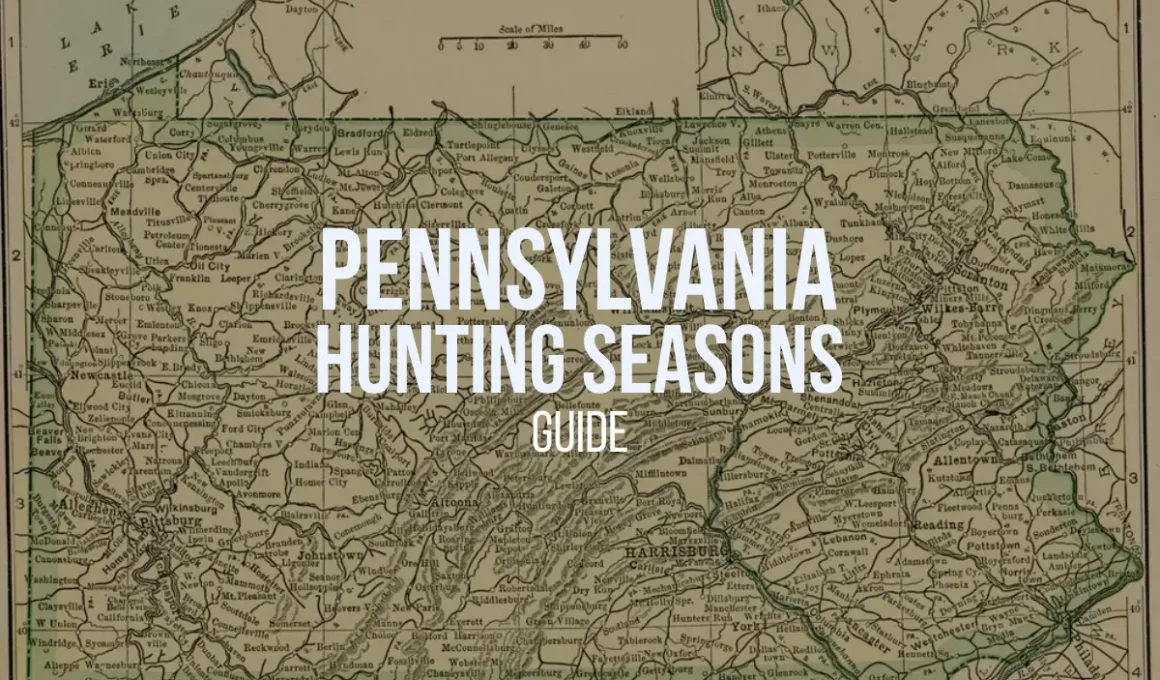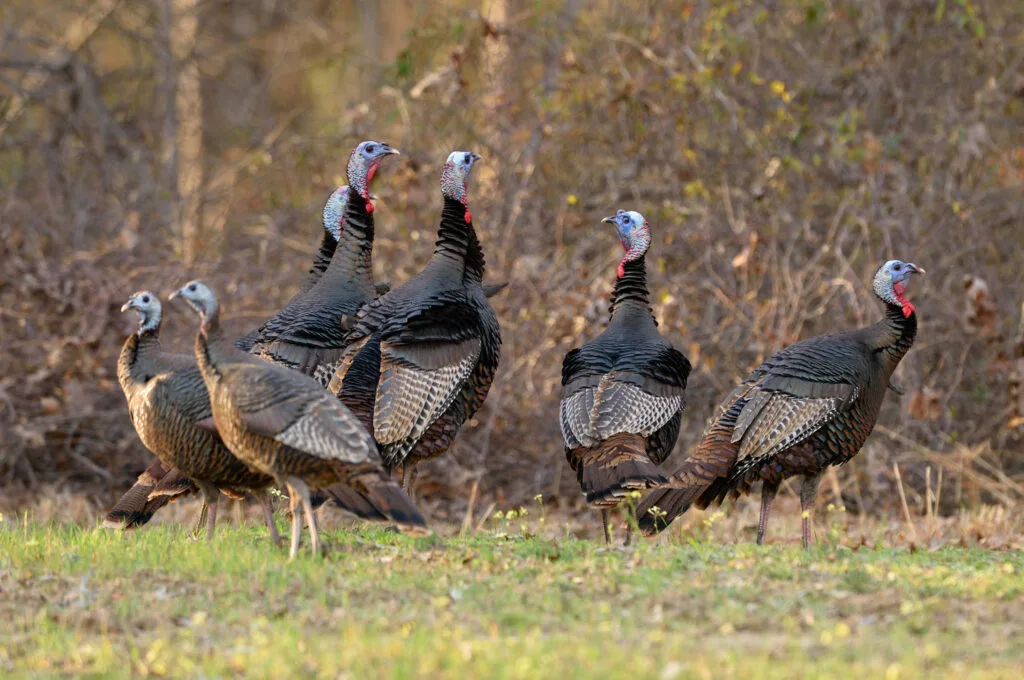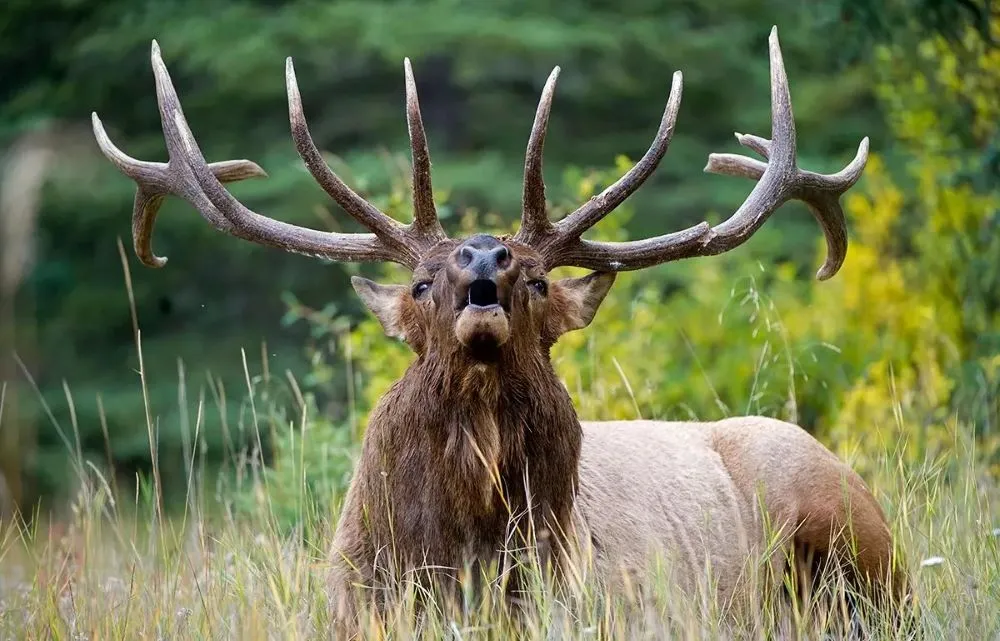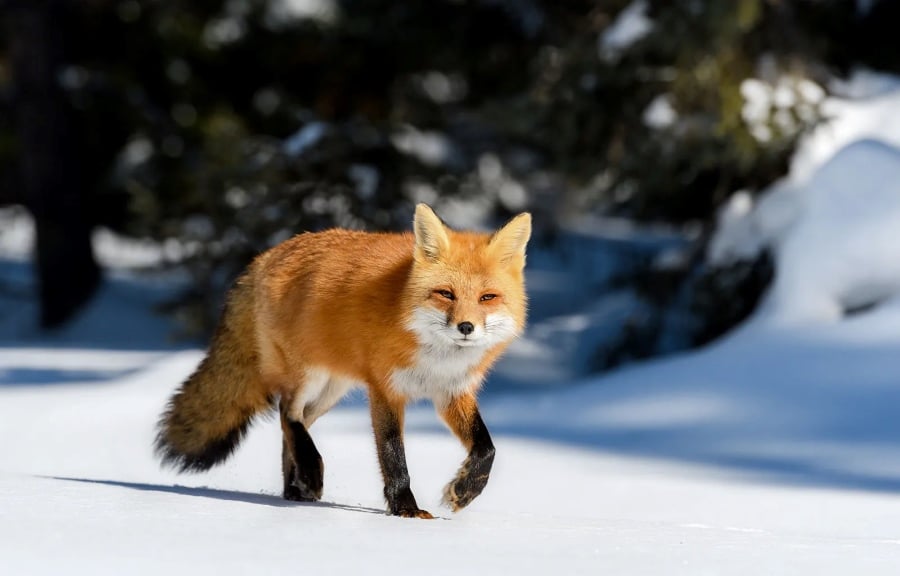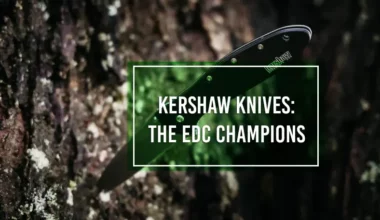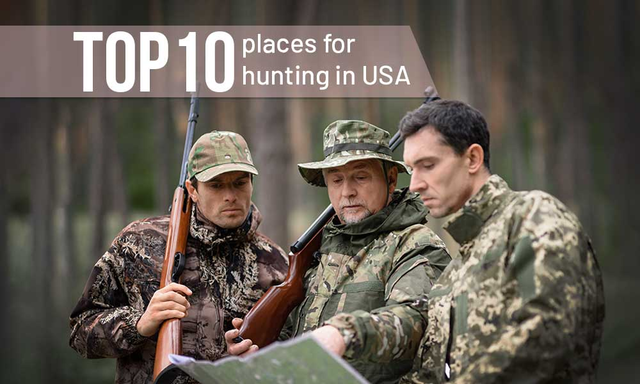The 2023-2024 hunting season in PA is still on for some game species, primarily spring turkey and furbearers. However, if you’re after big game animals, like deer, elk, or bear, your time will begin with the opening of the 2024-2025 season. While official dates of the upcoming seasons are still pending, we’ve gathered preliminary information to help you prepare.
So, if you’re a new hunter in Pennsylvania, this guide will equip you with crucial insights and updates for the 2024-2025 hunting season in PA and inform you of the opportunities to seize in the 2023-2024 season.
PA License Year
July 1
through
June 30
Legal Sunday hunting dates 24-25
(1) Nov. 17
(2) Nov. 24
(3) Dec. 1
Hunting Seasons in PA by Game Species
PA WMU Map

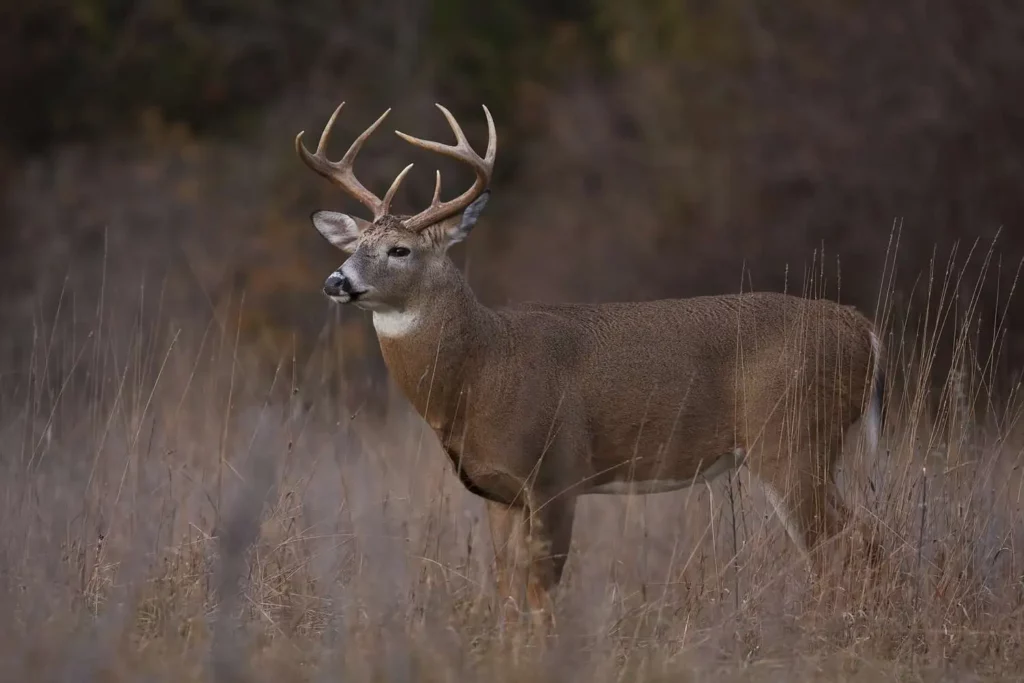
With a deer population of around 1.5 million, Pennsylvania ranks as the biggest population in the Eastern United States and the 6th highest state for whitetail numbers – that’s roughly 30 deer for every square mile. Hunters have a variety of weapons at their disposal: traditional firearms, bows, muzzleloaders, and even flintlock rifles. There’s a specific season for each method of take. Also, Pennsylvania has a special season for young and older hunters, those with disabilities who need to hunt from vehicles, and residents actively serving in the U.S. Armed Forces or Coast Guard.
Deer Season Dates in PA
*as of the date of this post, only preliminary dates are approved for the 2024-25 season.
In PA, deer hunting is allowed on any of these three Sundays:
(1) Nov. 17
(2) Nov. 24
(3) Dec. 1
Deer Archery – Antlered & Antlerless
WMUs 2B, 5C, 5D: Sept. 21-Nov. 29 (1), (2) / Dec. 26-Jan. 25, 2025
Statewide: Oct. 5-Nov. 22 (1) / Dec. 26-Jan. 20, 2025
Deer Muzzleloader – Antlerless Only
Statewide: Oct. 19-26.
Deer Special Firearms – Antlerless Only
Junior & Senior license holders, Mentored license holders, active-duty military, and persons with a permit to use a vehicle as a blind.
Statewide: Oct. 24-26.
Deer Regular Firearms – Antlered & Antlerless
Statewide: Nov. 30-Dec. 14 (3)
Deer Flintlock – Antlered & Antlerless
Statewide: Dec. 26-Jan. 20, 2025.
WMUs 2B, 5C, 5D: Dec. 26-Jan. 25, 2025.
Deer Extended Firearms – Antlerless Only
Statewide: Dec. 26-Jan. 25, 2025.
Military bases – Antlerless Only
- Hunting is permitted on days established by the U.S. Department of the Army at:
- Letterkenny Army Depot, Franklin County
- New Cumberland Army Depot, York County
- Fort Detrick, Raven Rock Site, Adams County
Deer Hunting in PA: Licenses, Rules, and Regulations
Bag limit: 1 antlered deer per hunting license year. 1 antlerless deer with each required antlerless license or permit.
Legal hunting hours: ½ hour before sunrise until ½ hour after sunset.
Licenses:
- You need a general hunting license to hunt in any season.
- With a general hunting license, you can only take one antlered deer each year.
- If you have an unused tag for an antlered deer from your general hunting license, you can use it to take an antlerless deer during the flintlock muzzleloader season after Christmas.
- The only time you can use the tag for an antlered deer for an antlerless deer is during the flintlock muzzleloader season.
- If you’re taking part in the flintlock muzzleloader season, you need to have both a muzzleloader and a general license.
- To join the October muzzleloader season for antlerless deer, you need a muzzleloader license.
- Unless it’s the flintlock muzzleloader season, every hunter needs a license or DMAP antlerless deer permit to hunt or take such deer.
- You can take one antlerless deer for each valid license or permit you have.
- Each hunter can only have up to six licenses for antlerless deer that haven’t been filled at any given time.
- Hunters can get more licenses as they take an antlerless deer and report them, but only if there are still licenses available.
- Once all the licenses for antlerless deer allocated for a specific Wildlife Management Unit (WMU) are used up, no more will be sold.
- The Special Firearms season for antlerless deer is open to hunters who are young, old, being mentored, serving in the military, or disabled in certain ways.
- If you live in the state or not and are 65 or will turn 65 in the year you apply for the license, you’re allowed to hunt in the season.
- If you’re taking part in any archery deer season, you need to have both an archery and a general license.
Harvest reporting: within 10 days (5 days for persons required to make a homemade tag). Reporting is still required for DMAP antlerless deer, regardless of harvest success. Be sure to check the “no harvest” box if no deer is harvested.
Tagging: You can tag your deer anytime before you move its carcass. Unlike the past rule where a hunter had to tag a harvested deer before hunting another, this rule no longer applies. Remember to attach the harvest tag to the deer’s ear and keep it there until it’s processed for consumption or prepared for mounting. If you’re getting your deer tested for Chronic Wasting Disease (CWD), make sure to leave the filled-out harvest tag with the head you’re submitting for the test.
Arms and Ammo:
Firearm Season: In Pennsylvania, the hunting gear you can use includes manually operated centerfire rifles, handguns, and shotguns with all-lead bullets or those designed to expand on impact. You can also use semiautomatic centerfire shotguns that fire single-projectile ammunition.
Any muzzleloading long gun of 44 caliber or larger or a handgun of 50 caliber or larger is acceptable. Long, recurve, or compound bows and crossbows with broadheads of cutting-edge design are allowed.
Archery Season: You can use long, recurve, or compound bows with a minimum draw weight of 35 pounds, and crossbows that have sharp, cutting-edge broadheads. You can also use magnifying scopes and red-dot sights on your crossbows.
Your arrows and crossbow bolts should be fitted with a broadhead – a metal or stone tip with sharpened edges. This broadhead needs to be at least 7/8 of an inch wide and no more than 3.25 inches long.
During archery deer seasons, hunters can’t carry firearms, except those with an LTC permit. And even then, only certain firearms are allowed (most sporting arms are not).
If you’re bowhunting during any muzzleloading season, including the bear season, you can carry a muzzleloading firearm as long as you have a bear license, an archery license, and a muzzleloader license. Just make sure you meet the fluorescent orange clothing requirements for the muzzleloader season.
Muzzleloader Season: During October’s Antlerless Muzzleloader Season in Pennsylvania, hunters can use any single-barrel muzzleloading long gun. This includes flintlock, in-line, or percussion ignition guns of 44 caliber or larger, or handguns of 50 caliber or larger. The bullet should be loaded from the muzzle while the propellant charge is loaded from the breech. Scope sights are allowed.
Archery equipment can also be carried by muzzleloader hunters as long as they have an archery license and wear the necessary fluorescent orange clothing.
Flintlock muzzleloader: For the Flintlock Muzzleloader Season, hunters can use a flintlock ignition, single-barrel long gun of 44 caliber or larger, or a 50 caliber or larger handgun with single-projectile ammunition. Telescopic sights are not permitted. Peep sights are allowed.
Regulations:
- 250 square inches of blaze orange is required during deer firearms seasons, October antlerless deer muzzleloader season, and extended antlerless firearms season in WMUs 2B, 5C, and 5D.
- When using a blind or enclosed tree stand during the firearms deer, bear, or elk seasons, a minimum of 100 square inches of fluorescent orange material (orange alert band) must be displayed within 15 feet of the blind or stand and visible from 360 degrees. This is in addition to wearing orange while inside.
- During the Regular Firearms Deer Season, it’s unlawful to take or attempt to take other wild mammals or birds, except game birds on regulated hunting grounds, migratory waterfowl, coyotes, feral swine, wild boars, and bears.
- Mentored hunting programs are open to unlicensed hunters of all ages.
- Hunting deer with an e-caller is unlawful.
- Full-auto and semi-auto rifles may not be used to hunt deer.
- Drive hunts are permitted. Drive participants must have a valid license and comply with all blaze orange requirements.
- It’s illegal to hunt deer in parties of more than 25 persons.
CWD Testing: Hunters who hunt in Disease Management Areas (DMA) and the Established Area (EA) in PA are offered free Chronic wasting disease (CWD) testing. There is currently no evidence that CWD can be transmitted to humans or livestock, but research shows it can pass through the digestive tract of scavengers and predators, remain infectious in plants and soils, and contaminate water sources.
Turkey Season Dates in PA
*as of the date of this post, only preliminary dates are approved for the 2024-25 season.
Spring Wild Turkey (23-24 season):
Youth: April 27, 2024 (only 1 spring gobbler may be taken; hunting hours end at noon)
Statewide: May 4-31, 2024
Hunting hours:
- May 4-18 – ½ hour before sunrise until noon. Hunters must leave the woods by 1 p.m.
- May 20-31 – ½ hour before sunrise until ½ hour after sunset.
Bag limit: up to 2 bearded birds (1 per day) with proper license.*
Fall Wild Turkey – Male or Female (24-25 season):
WMUs 1A, 2G, 3A, 4A, 4B and 4D: Nov. 2-16
WMUs 1B, 3D, 4C and 4E: Nov. 2-9
WMUs 2A, 2F, 3B, and 3C: Nov. 2-16 and Nov. 27-29;
WMUs 2B, 2C, 2D, and 2E: Nov. 2-22 and Nov. 27-29
WMUs 5A and 5B: Nov. 2-5
WMUs 5C and 5D: closed.
Bag limit: 1 bird per license year. Bearded and unbearded birds.
Spring Wild Turkey – Bearded birds only (24-25 season):
Youth: April 26, 2025 (only 1 spring gobbler may be taken; hunting hours end at noon)
Statewide: May 3-31, 2025.
Hunting hours:
- May 3-17 – ½ hour before sunrise until noon
- May 19-31 – ½ hour before sunrise until ½ hour after sunset
Bag limit: up to 2 bearded birds (1 per day) with proper license.*
* During spring gobbler seasons, the daily limit is 1 bird, while the season limit is 2 birds. The second spring gobbler may be only taken by hunters having a valid special wild turkey license. (see Second spring gobble tag)
Turkey Hunting: Licenses, Rules, and Regulations
Second spring gobble tag: The basic turkey hunting license allows you to harvest only 1 gobbler. However, you can buy a second spring turkey license. You can get it from any authorized dealer or on the Game Commission’s website. But remember, if you buy online, your license will be mailed to you, and you can’t use it until it arrives. This second license lets you hunt two gobblers, but you can only take one turkey each day.
Arms and Ammo:
Allowed: To legally hunt turkey in PA, you need a manually operated or semi-auto shotgun limited to a 3-shell capacity (chamber and magazine combined). Muzzleloading shotguns are allowed. You may use shot no larger than #4 lead, #2 steel, or #4 of any non-toxic shot approved by USFWS.
Bowhunters may use long, recurve, compound bows (having at least 35 lbs draw weight), or crossbows with a broadhead arrow tip, either fixed or mechanical, made from metal or natural stone. The tip’s width should be at least 7/8 of an inch and it shouldn’t be longer than 3.25 inches.
Forbidden: You can’t carry or use single-projectile firearms. This includes centerfire and rimfire rifles, handguns, and muzzleloaders (except shotguns) as well as slugs. During the spring season, you can use a rifle/shotgun combination gun as long as you use shotshells. Generally, you can hunt turkey with only shotguns and archery gear.
Blinds: Turkey hunting blind materials must have a sufficient density to block the detection of movement within it from outside of it. Also, it must be made from all-manmade materials, such as plastic, cotton cloth, plywood, etc., and completely enclose the hunter from all four sides. Fanned-tail blinds are illegal.
If you leave a portable hunting blind on state game lands or other Hunter Access properties, you need to clearly mark it with a tag. This tag should have your name, home address, or a CID number from your hunting license or a number given by the Game Commission. You can get identification numbers from HuntFishPA on the Game Commission’s website.
Harvest reporting: within 10 days (5 days for persons required to make a homemade tag). Reporting is still required for the second license turkey, regardless of harvest success. Be sure to check the “no harvest” box if no deer is harvested.
Tagging: PA issues separate tags for the spring and fall seasons. You must tag the turkey immediately after harvest and before you move its carcass. Attach the harvest tag to a leg and keep it there until the bird is prepared for consumption or mounting. Once the tag is used, you can’t bring it to the field. The same goes for your old hunting license.
Regulations:
- Blaze orange isn’t required, though is strongly recommended.
- Sunday turkey hunting is not allowed.
- You can use dogs during the fall season only.
- No single-shot firearms and ammunition are allowed.
- Only hunting by calling is legal; no stalking or driving is allowed. It’s unlawful to use e-callers, electronic devices, and live decoys.
- Hunters must refrain from knowingly harvesting bearded hens during the spring season.
Elk Season Dates in PA
*as of the date of this post, only preliminary dates are approved for the 2024-25 season.
Elk Archery: Sept. 14-28.
Elk Firearms – Antlered or Antlerless: Nov. 4-9.
Elk Late: Dec. 28-Jan. 4, 2025.
PA elk hunting seasons occur in designated Elk Hunt Zones in the Elk Management Area.
Elk hunting is closed on Sundays.
Elk Hunting: Licenses, Rules, and Regulations
Bag limit: 1 elk during the license year.
Legal hunting hours: ½ hour before sunrise until ½ hour after sunset.
Elk Licenses:
- You must have an elk license to hunt elk in PA.
- 14 Elk Hunt Zones exist in PA. Licenses for these zones are lottery-based.
- Three elk seasons have separate drawings and bonus points systems.
- Residents and nonresidents can participate in one, two, or all three drawings, with a maximum of one application per season.
- Successful applicants can hunt in their drawn season within a designated Elk Hunt Zone. EHZ 1 is open to all with a valid license.
- Hunters can harvest one antlered or one antlerless elk per license year, depending on their license.
- Antlered license winners cannot apply for five years; antlerless license winners can apply the following season.
- Unsuccessful applicants earn bonus points for future draws.
- Licenses are assigned based on applicants’ preferences. Hunters can choose up to five elk hunt zones and select a fallback option.
- Submitting more than one application per season will lead to disqualification and potential prosecution.
Apply online at HuntFish.PA.gov (nonrefundable application fee applies) or at Point of Sale hunting license agent locations.
Harvest reporting: within 24 hours, each person who harvests an elk must take the animal, along with a hunting license and an elk license, to a Game Commission check station for examination. Hunters will receive instructions for their elk check station location and hours in the mail before the season.
Tagging: You must tag an elk immediately after harvest and before the carcass is moved. The harvest tag must be attached to the ear and remain attached until the animal is processed for consumption or prepared for mounting.
Arms and Ammo:
To legally hunt elk in PA, you can use:
- Manually operated centerfire rifles and handguns of at least .26 caliber with single-projectile ammunition 120 grains or larger.
- Manually operated or semi-automatic centerfire shotguns of at least 12-gauge firing a single projectile.
- Muzzleloading firearms of at least .50 caliber propelling a single projectile of a minimum of 210 grains.
- Bows with a draw weight of at least 45 pounds.
- Crossbows with a draw weight of at least 125 pounds.
- Arrows or crossbow bolts should have a broadhead with a fixed or mechanical metal or natural stone tip, a minimum diameter of 1 inch, and a maximum length of 3.25 inches.
Quick notes:
- 250 square inches of blaze orange is required during firearms and late seasons. It should be visible from 360 degrees. Camo blaze orange is OK if the total orange content is 250 square inches.
- It’s unlawful to drive or herd elk.
- It’s unlawful to feed elk at any time of the year.
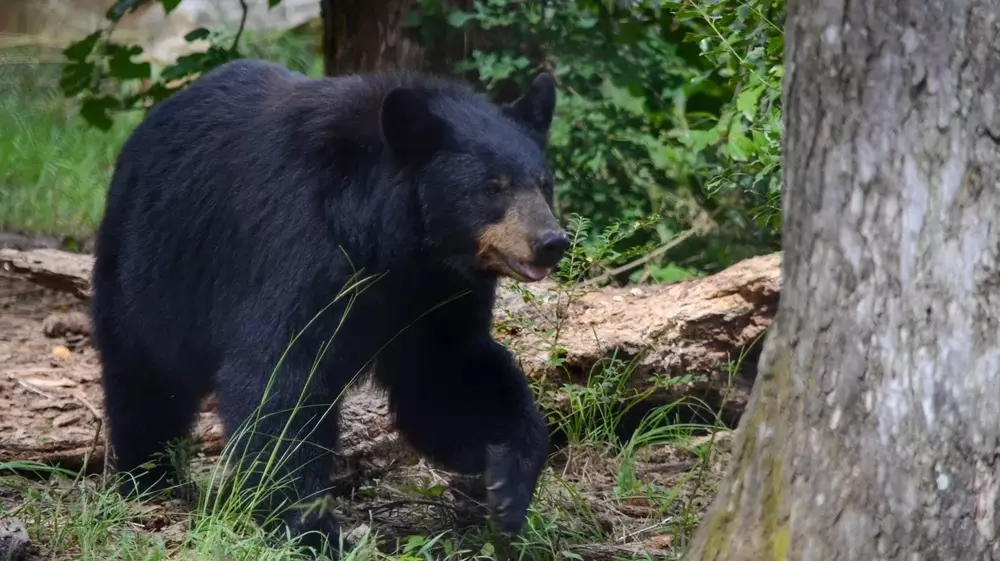
The main change expected in the 2024-25 bear hunting season in PA is a shortened October muzzleloader season. Previously, during the 2023-24 hunting season, it lasted for 7 days, which affected the bear population. Shortening it to 3 days will reduce the female bear harvest rate and promote population stability.
Black Bear Season Dates in PA
*as of the date of this post, only preliminary dates are approved for the 2024-25 season.
In PA, bear hunting is allowed on any of these three Sundays:
(1) Nov. 17
(2) Nov. 24
(3) Dec. 1
Bear Archery:
WMUs 2B, 5C and 5D: Sept. 21-Nov. 29 (1), (2)
WMU 5B: Oct. 5-Nov. 22 (1)
WMUs 1A, 1B, 2A, 2C, 2D, 2E, 2F, 2G, 3A, 3B, 3C, 3D, 4A, 4B, 4C, 4D, 4E and 5A: Oct. 19-Nov. 9.
Bear Muzzleloader:
Statewide: Oct. 24-26. Only 1 bear may be taken during the license year.
Bear Special Firearms:
Junior & Senior license holders, Mentored license holders, active-duty military, and certain disabled persons’ permit holders. Arms and ammunition permitted during the regular firearms bear season can be used
Statewide: Oct. 24-26
Bear Firearms:
Statewide: Nov. 23-26 (2)
Bear Extended:
WMUs 3A, 3B, 3C, 3D, 4C, 4E and 5A: Nov. 30-Dec. 7 (3)
WMUs 2B, 5B, 5C and 5D: Nov. 30-Dec. 14 (3)
Bear Hunting: Licenses, Rules, and Regulations
Bag limit: 1 bear during the license year.
Legal hunting hours: ½ hour before sunrise until ½ hour after sunset.
Licenses:
- You need a general hunting license or a mentored permit (age 7 or older) to hunt in any season.
- Bear hunters need a bear license along with their general license.
- With a bear license, you can join in bear bow hunting and bear muzzleloader hunting seasons without needing an archery or muzzleloader license for these two particular seasons.
- You can buy bear licenses from the time general hunting licenses are available for sale until December 10, which is when the last extended hunting season ends.
Harvest reporting: within 24 hours, each person who harvests a bear must take the animal, along with a hunting license and a bear license, to a Game Commission check station for examination.
Tagging: You must tag a bear immediately after harvest and before the carcass is moved. The harvest tag must be attached to the ear and remain attached until the animal is processed for consumption or prepared for mounting.
Bear check stations: Bear check stations are open on the first two days of the regular firearms bear season and on select days of the extended seasons. If you harvest a bear on any date check stations aren’t open, you must contact the Centralized Dispatch Center at 1-833-PGC-HUNT or 1-833-PGC-WILD for instructions to have your bear checked.
You should field-dress your bear before bringing it to a check station. Also, place a 3-4 inch stick into the bear’s mouth at the time of harvest, before rigor mortis or freezing temperatures set in.
Arms and Ammo:
To legally hunt bears in PA, you can use:
- Manually operated centerfire rifles, handguns, and shotguns. Your ammo should either be an all-lead bullet or ball, or a bullet designed to expand upon impact. Buckshot is not allowed.
- A semi-automatic centerfire shotgun with slug ammunition.
- Muzzleloading long guns in .44 caliber or larger or muzzleloading handgun in .50 caliber or larger.
- A long, recurve, or compound bow with draw weights of at least 35 pounds. If you’re using a crossbow, it needs to have a minimum weight of 125 pounds. A broadhead must be a fixed or mechanical tip attached to the front end of an arrow or bolt. It should have sharpened cutting edges made of metal or naturally occurring stone. The broadhead must have an outside diameter or width of at least 7/8 of an inch, and it can’t be longer than 3.25 inches.
Regulations:
- 250 square inches of blaze orange is required during bear firearms seasons, including the muzzleloader season. It should be visible from 360 degrees.
- It’s unlawful to kill a bear in a den; use a radio to locate a bear to which a radio transmitter has been attached; and use scents or lures.
- It’s illegal to hunt bears in parties of more than 25 persons.
Small Game Hunting Season in PA
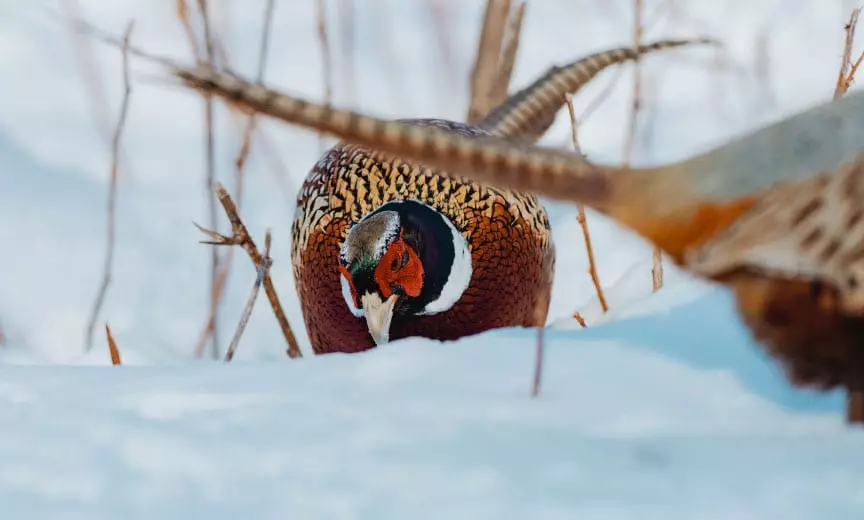
As for small game, PA has hunting seasons for squirrel, rabbit, snowshoe hare, woodchuck, pheasant, bobwhite quail, grouse, and crow. The only modification proposed for the 2024-25 seasons is about pheasant hunting within the Central Susquehanna Wild Pheasant Recovery Area (WPRA), which is currently available only to youth participants drawn in a lottery. The proposal is to remove the age limit and permit requirements. Instead, the head of the agency would decide each year which WPRAs can be hunted in. They would also set the hunting season dates and bag limits. Another proposal is to allow mentored hunters of all ages to join in the early October pheasant hunting season. This part of the season is usually known as the Junior Hunt.
Small Game Animals & Birds Seasons in PA
*as of the date of this post, only preliminary dates are approved for the 2024-25 season.
Squirrels – Red, Gray, Black, and Fox (combined):
Special (eligible junior hunters, with or without a required license): Sept. 14-28
Statewide: Sept. 14-Nov. 29 (1), (2) / Dec. 16-24 / Dec. 26-Feb. 28, 2025
Bag limit: 6 daily, 18 in possession.
Rabbit – Cottontail:
Special (eligible junior hunters, with or without a required license): Oct. 5-19
Statewide: Oct. 19-Nov. 1 / Nov. 17-29 (1) (2) / Dec. 16-24 / Dec. 26-Feb. 28, 2025
Bag Limit: 4 daily, 12 in possession.
Hares – Snowshoe or other:
Statewide: Dec. 26-Jan. 1, 2025
Bag limit: 1 daily, 3 in possession.
Woodchuck (Groundhog):
Statewide: July 1-Nov. 29; (1) (2) / Dec. 16-June 30, 2025
Bag limit: No limit.
Pheasant:
Special (eligible junior hunters, with or without a required license, and all mentored hunters, regardless of age): Oct. 12-19
Statewide: Oct. 26-Nov. 29 (1), (2) / Dec. 16-24 / Dec. 26-Feb. 28, 2025
Bag limit: 2 daily, 6 in possession. Male and female pheasants can be hunted in all WMUs, except for Wild Pheasant Recovery Areas where pheasant hunting is authorized by executive order.
Bobwhite Quail:
Statewide (except the Letterkenny Army Depot Bobwhite Quail Recovery Area): Sept. 2-Nov. 29 (1), (2) / Dec. 16-24 / Dec. 26-March 31, 2025
Bag limit: No limit
Ruffed Grouse:
Statewide: Oct. 19-Nov. 29 (1), (2) / Dec. 16-24
Bag limit: 2 daily, 6 in possession
Crow:
Statewide: Aug. 22-March 23, 2025, on Thursday, Friday, Saturday, and Sunday only
Bag limit: No limit
Starling and English sparrow:
No closed season, except during the regular firearms deer season. No limit.
Small Game Hunting: Licenses, Rules, and Regulations
Arms and Ammo:
It’s legal to hunt small game with these arms and ammunition:
- Manually operated and semiautomatic shotguns (10-gauge or less; 3-shell capacity, chamber and magazine combined)
- Manually operated and semi-automatic rifles and manually operated handguns in 22-caliber rimfire or less
- .177-.22 air guns for small game and at least .22 for woodchucks that propel a single-projectile or bullet. BBs are forbidden.
- Muzzleloading rifles and handguns in .40 or less and shotguns in 10 gauge or less
- Long, recurve, and compound bows and arrows, and crossbows.
- Single-projectile ammunition, or fine shot pellets no larger than #4 lead, bismuth-tin, or tungsten-iron, or other approved non-toxic shot or #2 steel.
- Rifle and handgun caliber restrictions, except air guns, don’t apply to hunting woodchucks.
Pheasant Permit: Adult hunters and some senior hunters must have a pheasant permit in addition to a general hunting license. Senior lifetime resident hunting or senior lifetime resident combination license holders who acquired their licenses before May 13, 2017, are exempt from a pheasant permit requirement. Junior hunters and mentored permit holders under 17 need a FREE permit.
Transporting and Tagging: You may transport small game untagged. However, you must attach a label with your name, address, CID number, and signature when leaving your small game unattended.
Blaze orange: Small game and porcupine hunters need to wear at least 250 square inches of blaze orange on their head, chest, and back altogether. It needs to be visible from all angles. Woodchuck hunters must wear a solid blaze orange cap on their heads. Crow hunters don’t need to wear any orange.

*2024-2025 seasons for hunting waterfowl and migratory game birds are to be set at a later date.
In the U.S., it’s the Migratory Bird Treaty Act of 1918 (MBTA) that determines which migratory bird species can be legally hunted, when hunting can occur, and what methods can be used. The FWS sets hunting season dates and bag limits following guidelines set out in the MBTA.
For example, waterfowl hunting seasons are typically timed to occur when ducks and geese are at their highest population levels, after breeding and raising their young. Usually, annual framework dates range from the end of September to the end of January for ducks.
Generally speaking, hunting seasons can’t exceed 107 days, and the opening framework dates can’t be earlier than the Saturday closest to September 24, while the closing date can’t be after January 31.
Unfortunately, being a part of the Atlantic Flyway, Pennsylvania has one of the shortest waterfowl and migratory game bird seasons in the US. But don’t let that deter you! You can still have an incredible time hunting ducks or doves in PA.
Waterfowl and Migratory Birds: Licenses, Rules, and Regulations
Hunting hours*:
- Dove season (entire): ½ hour before sunrise until sunset
- September Canada goose season: ½ hour before sunrise until ½ hour after sunset
- Light goose conservation season: ½ hour before sunrise until ½ hour after sunset
- Youth waterfowl season: ½ hour before sunrise until sunset
- All other migratory bird seasons: ½ hour before sunrise until sunset
*Exact hunting hours for 2024-2025 are to be added later.
License Requirements:
- A general hunting license or mentored permit is required.
- If 16 or older, get a signed federal duck stamp to legally hunt waterfowl. E-stamps are valid in Pennsylvania and available at HuntFishPA.
- All hunters need a Pennsylvania Migratory Game Bird License for hunting ducks, geese, doves, woodcock, brant, coots, gallinules, rails, and snipe.
- Mentored hunters can buy migratory game bird licenses for authorized species.
- To hunt light geese in conservation season, purchase a conservation season permit and report hunting activity and harvest.
Arms and Ammo:
To legally hunt waterfowl and migratory game birds in PA, you can use:
- Manually operated and semiautomatic shotguns (10-gauge or less; 3-shell capacity, chamber and magazine combined)
- Long, recurve, and compound bows and arrows; and crossbows.
- Only non-toxic fine shot up to and including size T (.20 inches) is lawful for waterfowl. Hunt waterfowl with lead shot is prohibited.
Regulations:
- You can use electronic decoys to hunt waterfowl, doves, and crows.
- Blaze orange isn’t required for waterfowl and dove hunters.
- Hunting waterfowl and doves in a party of more than 6 people is allowed only if hunting from a blind or stationary position.
- It’s unlawful to use a shotgun that can hold more than 3 shells unless it’s plugged with a one-piece filler that can be removed only when disassembling the gun.
- It’s unlawful to hunt from a sink box, car, motor-driven conveyance, or aircraft.
- It’s unlawful to hunt from a motorboat or sailboat unless the engine is off or sail furled and it’s stopped moving.
- It’s unlawful to use live decoys and electronic calls.
- It’s unlawful to drive, rally, or chase birds with any motorized vehicle or sailboat to get them in range.
- Hunting with the aid of baiting or over a baited area is prohibited. Remember, an area is considered baited for 30 days after removing the bait.
Furbearer Trapping and Hunting Season Dates in PA
*as of the date of this post, only preliminary dates are approved for the 2024-25 season.
Furbearer Hunting Seasons:
Coyote:
Statewide: No closed season.
No limit. During any big game season, coyotes can be legally hunted while pursuing other big game or with a furtaker license
- Coyotes can be hunted year-round, including on Sundays.
- Coyotes can be hunted with a hunting license or a furtaker license outside any big game seasons (deer, bear, elk, turkey) without needing blaze orange.
- During big game seasons, they can be hunted while legally pursuing big game (blaze orange requirements must be followed) or with a furtaker license.
- The use of natural or artificial nonliving bait and electronic or mechanical devices is permitted for attracting coyotes for hunting or trapping. However, using aerially visible bait for trapping is prohibited, though it’s acceptable for hunting coyotes.
Fox:
Statewide: Oct. 26-Feb. 22
No limit. Sunday hunting permitted.
Raccoon:
Statewide: Oct. 26-Feb. 22, 2025. (1) (2) (3)
No limit.
Opossum, striped skunk, weasel:
Statewide 2024-25: No closed season, except during the firearms deer season.
No limits. No Sunday hunting with the exceptions of (1), (2), (3)
Bobcat:
WMUs 2A, 2B, 2C, 2D, 2E, 2F, 2G, 3A, 3B, 3C, 3D, 4A, 4B, 4C, 4D and 4E: Jan. 11-Feb. 5, 2025.
1 bobcat per license year. Licensed furtakers may obtain 1 permit each.
Porcupine:
Statewide: Oct. 12-Nov. 29 (1) (2) / Dec. 16-24 / Dec. 26-Feb. 1, 2025.
3 daily, season limit of 10.
Furbearer Trapping Seasons:
Coyote, fox, opossum, raccoon, striped skunk, weasel:
Statewide: Oct. 26-Feb. 23, 2025.
No limits.
Coyote and Fox – Cable Restraints:
Statewide: Dec. 26-Feb. 23, 2025.
No limits. Participants must pass the cable restraint certification course.
Beaver:
Statewide: Dec. 21-March 31, 2025.
Limits vary depending on WMU.
Bobcat:
WMUs 2A, 2B, 2C, 2D, 2E, 2F, 2G, 3A, 3B, 3C, 3D, 4A, 4B, 4C, 4D and 4E: Dec. 21-Jan. 12, 2025.
1 bobcat per license year. Licensed furtakers may obtain one permit each.
Fisher:
WMUs 1B, 2C, 2D, 2E, 2F, 2G, 3A, 3B, 3C, 3D, 4A, 4B, 4C, 4D and 4E: Dec. 21-Jan. 12, 2025.
1 fisher per license year. Licensed furtakers may obtain one permit each.
Mink and Muskrat:
Statewide: Nov. 23-Jan. 12, 2025.
No limits.
River Otter:
WMUs 1A, 1B, 2F, 3B, 3C, 3D and 4E: Feb. 15-22, 2025.
1 river otter per license year. Licensed furtakers may obtain one permit each.
Licenses:
- Hunting coyotes doesn’t require a furtaker license unless you’re out of big-game tags.
- A furtaker license is necessary for trapping coyotes.
- Porcupines can be hunted with either a hunting or furtaker license.
- Hunting or trapping other furbearers requires a furtaker license.
- Bobcat, fisher, and otter require additional permits along with a furtaker license.
Arms and Ammo:
- Furbearers, including bobcats, cannot be hunted with shotguns using shot larger than No. 4 buckshot or unlawful firearms, bows, or crossbows.
- Allowed weapons include semiautomatic and manually operated rifles and manually operated handguns of any caliber, manual or semiautomatic shotguns, bows, and crossbows.
- Muzzleloading rifles or handguns propelling single-projectile ammunition are permissible.
- Air- or gas-operated firearms of at least 22-caliber propelling a single-projectile pellet or bullet can be used.
- Gun-mounted lights that don’t project a laser light beam, handheld and sporting-arm-mounted night-vision, and infrared (thermal) optics are allowed for hunting coyotes, foxes, bobcats, raccoons, striped skunks, opossums, and weasels
FAQs
Do I need a license to hunt in Pennsylvania?
Yes, you need a valid Pennsylvania hunting license to hunt in the state. There are different types of licenses available, such as the regular adult hunting license, junior hunting license, and senior hunting license, among others. In addition, you may need a separate hunting license to hunt specific game animals, like elk. You can purchase these licenses from the Pennsylvania Game Commission’s website or from authorized issuing agents.
Can non-residents hunt in Pennsylvania?
Absolutely! Non-residents are welcome to hunt in Pennsylvania, but they must obtain a non-resident hunting license.
What type of game can I hunt in Pennsylvania?
Pennsylvania offers a wide variety of game for hunters. This includes white-tailed deer, black bear, turkey, squirrel, rabbit, pheasant, grouse, and waterfowl, among others. Each species has its own specific season and regulations.
Where can I hunt in Pennsylvania?
There are many places to hunt in Pennsylvania, including state game lands, state forests, and national forests. Some private lands are also open to public hunting through the Hunter Access Program. Always be sure to respect private property and follow all rules and regulations when hunting.
